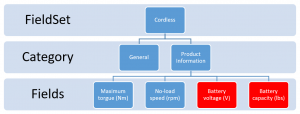To be successful, businesses need to sell their products quickly, seamlessly and at the lowest possible cost. This starts with managing your product data efficiently. By reducing the complexity of data management and providing a process that requires little involvement from IT, organizations can reduce the time it takes to make a product available to the consumer and sell products faster. This means putting the control of product information in the hands of the business teams rather than IT to enable more seamless data management. Finally, all these processes need to be done at the lowest possible cost by reducing the need for specialized IT roles to maintain the overall product information management model.
However, to accomplish this, there are often clashes between business goals, data governance, master data management, data quality and product information management (PIM). InRiver has provided two approaches – an admin-centric method as well as a business user method – to overcome these clashes. Respectively known as “Field Sets” and “Specification” methods, these methods are designed to cater to business channels and IT entities differently.
The FieldSets method
The Future of Big Data
With some guidance, you can craft a data platform that is right for your organization’s needs and gets the most return from your data capital.
The FieldSets method provides the ability to create individual FieldSets to sort products or items at an entity level. That way, users can search for items and view only the products that fit specific fields. This effectively reduces the fields presented on the screen by grouping them into categories. This feature doesn’t require any custom extensions, and entities cannot be copied. It’s also important to note that for larger entities with many categories and fields under the FieldSet method, performance should be considered and benchmarked.


The Specification method
The Specification method provides the ability to create Parent and Child templates to support product data inheritance and field copying. By managing entities from a hierarchical inheritance perspective, data can be managed and updated from the parent template and updated across all the entities that it was copied from. Subsequently, child templates can be created and modified under the parent template while maintaining their inherited fields. While the concept of categories remains the same, this feature will require custom extensions. In addition, the search capabilities under this model are different, and larger entities will have improved fields performance.

To sell their products efficiently, businesses need to manage product data in a way that avoids conflicts between business goals, data governance, master data management, and data quality. Adopting one of InRiver’s suggested approaches can be an effective tool to overcome these obstacles and continue successful selling.

